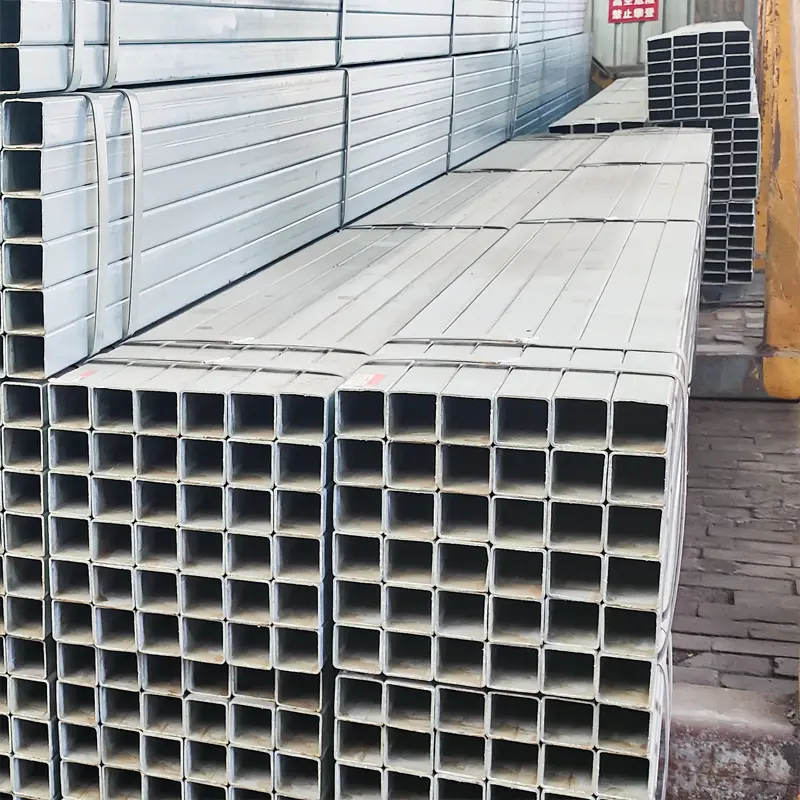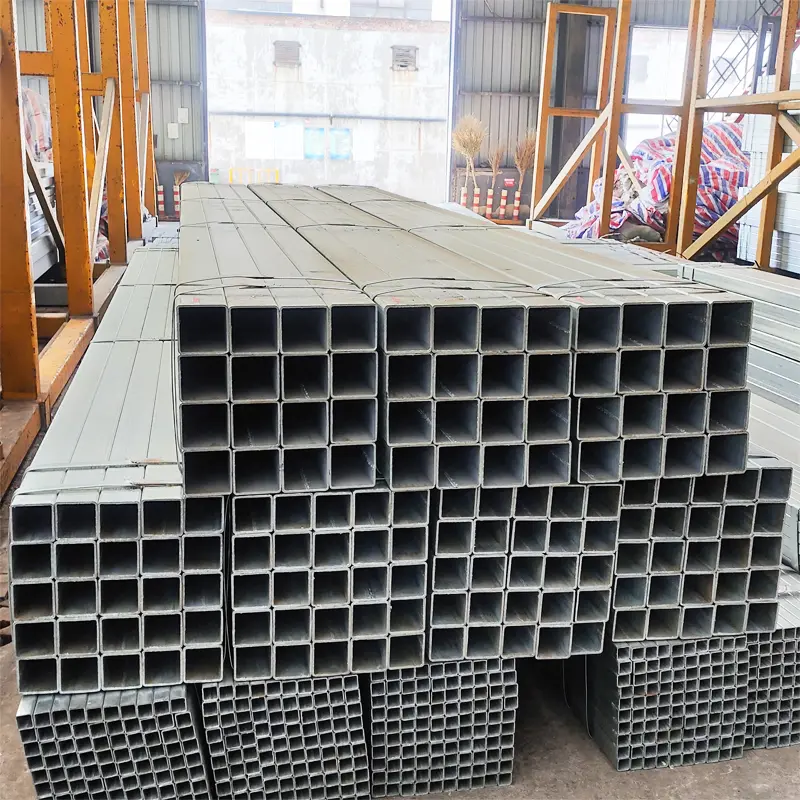Detailed explanation of the classification, uses, advantages and disadvantages of square tubes
Square tube is a square steel tube with a wide range of uses. It is mainly used as a pipeline for conveying fluids, manufacturing mechanical parts and engineering structures, building structure fields, etc.


Its advantages are good cross-sectional characteristics, good corrosion resistance, simple construction, and it can reduce engineering costs. Although there are cold hardening performance defects, they can be avoided through node structure and process measures. Therefore, Square Tube is still a widely used building material. There are many types of square tubes, and there are different types according to different classification methods. For example, according to the process, it can be divided into seamless square tubes and welded square tubes, according to the material, it can be divided into plain carbon steel square tubes and low alloysquare tubes, and according to the production standard, it can be divided into national standard square tubes and Japanese standard square tubes. According to the surface treatment, it can be divided into galvanized square tubes, oiled square tubes, pickled square tubes, etc. When choosing a square tube, not only should the appropriate type of square tube be selected according to the purpose, but also its performance parameters should be considered, including plasticity, hardness, strength, etc. Let's take a look at the classification method of square tubes.
1. Classification of square tubes
Square tubes are a type of Steel Tube widely used in the field of construction. According to different application fields, there are many ways to classify square tubes. Here is a brief introduction:
1. Classification by process
(1) Seamless square tube: including hot-rolled seamless square tube, cold-drawn seamless square tube, extruded seamless square tube.
(2) Welded square tube: according to the process, it can be divided into arc-welded square tube, resistance-welded square tube, gas-welded square tube, furnace-welded square tube; according to the weld, it can be divided into straight-seam welded square tube; spiral-welded square tube.
2. Classification by material
(1) Ordinary carbon steel square tube: Q195.Q215.Q235.SS400.20# steel.45# steel, etc.
(2) Low alloy square tube: Q345.16Mn.Q390.ST52-3, etc.
3. Classification by production standard
Mainly national standard square tube, Japanese standard square tube, British square tube, American standard square tube, European standard square tube, non-standard square tube, etc.
4. Classification by cross-sectional shape
(1) Simple cross-section: square square tube, rectangular square tube.
(2) Complex cross-section: flower-shaped square tube, open square tube, corrugated square tube, special-shaped square tube.
5. Classification by surface treatment
It can be divided into hot-dip galvanized square tube, electro-galvanized square tube, oiled square tube, pickled square tube, etc.
6. Classification by use
Including decorative square tube, square tube for machine tool equipment, square tube for mechanical industry, square tube for chemical industry, square tube for steel structure, square tube for shipbuilding, square tube for automobile, square tube for steel beam column, square tube for special purpose, etc.
7. Classification by wall thickness
According to the wall thickness, it can be divided into three types: super thick wall square tube, thick wall square tube and thin wall square tube.
2. What are the performance parameters of square tubes?
According to the needs of different use fields, the performance requirements for square tubes are also different. Generally speaking, the parameters for measuring the performance of square tubes are as follows:
1. Plasticity
Refers to the ability of square tubes to produce plastic deformation (permanent deformation) without damage under load.
2. Hardness
Measure the hardness and softness of square tubes. The indentation hardness method is often used to measure the hardness of square tubes in production. It uses a certain geometric shape of the indenter to press into the surface of the square tube under a certain load, and measures its hardness value according to the degree of indentation. Commonly used methods include Brinell hardness (HB), Rockwell hardness (HRA.HRB.HRC) and Vickers hardness (HV).
3. Strength
Strength refers to the performance of square tubes in resisting damage (excessive plastic deformation or fracture) under static load. The load acts in the form of tension, compression, bending, shearing, etc., so the strength is also divided into tensile strength, compressive strength, bending strength, shear strength, etc. Square tubes generally mainly look at tensile strength and bending strength.
3. What are the uses of square tubes?
Square tube is a kind of building steel tube with various uses. According to the use, it can be divided into decorative square tube, square tube for machine tool equipment, square tube for mechanical industry, square tube for chemical industry, square tube for steel structure, square tube for shipbuilding, square tube for automobile, square tube for steel beam column, square tube for special purpose, etc. The specific uses are:
1. Used as a pipeline for conveying fluids: it can convey fluids such as oil, natural gas, water, coal gas, steam, etc.
2. Manufacturing mechanical parts and engineering structures: square tubes are light in weight and do not affect bending and torsional strength, so they are also widely used in manufacturing mechanical parts and engineering structures.
3. Building structure: as building beams, bridges, transmission towers, lifting and transportation machinery, ships, industrial furnaces, reaction towers, container racks, warehouse shelves and other building steel materials.
4. Is the square tube easy to use?
Square tubes are square square tubes, which are widely used in building materials. In actual application, the disadvantages are:
(1) Good cross-sectional characteristics: Compared with wide flange H-shaped steel and round steel tubes of the same weight or cross-sectional height, the bending stiffness of square tubes in the two main axis directions is 1.3 times that of round steel tubes, close to the bending stiffness of H-shaped steel in the strong axis direction, and 2 times in the weak axis direction. The turning radius is 17 times and 6 times. Strong bending stiffness not only significantly improves the bending bearing capacity, but also is more suitable for the conditions of truss inter-node loads or secondary bending moments of rods; the larger turning radius is more conducive to ensuring; ensuring the overall stability of rods and improving the bearing capacity of compression rods; at the same time, the larger stiffness is also very conducive to ensuring the overall stability of truss transportation and hoisting.
(2) Good corrosion resistance: At the same length, the pipe end is in a single-sided corrosion state after being closed during the use stage, so not only can the coating maintenance workload be reduced by about 1/3, but the corrosion resistance life can reach 2 times that of H-shaped steel.
(3) Reduce project costs: Use square tubes for cold bending and welding to avoid the complex processing technology of box-shaped lines, simplify construction, improve work efficiency and reduce costs.















